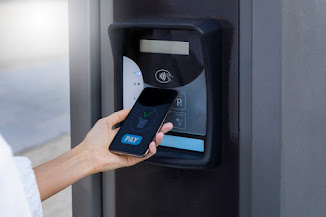Solar Drone Inspection
Solar Drone Inspection: Revolutionizing the Future of Solar Panel Maintenance
As the global demand for renewable energy sources continues to rise, solar power has emerged as a leading solution for sustainable electricity generation. With millions of solar panels installed worldwide, ensuring their efficiency and longevity has become a critical concern. Traditional methods of inspecting solar panels, often involving manual labor and ground-based equipment, can be time-consuming, costly, and sometimes unsafe. Enter solar drone inspection—a groundbreaking technology that is revolutionizing the way solar panel systems are monitored, maintained, and repaired.
What is Solar Drone Inspection?
Solar drone inspection refers to the use of unmanned aerial vehicles (UAVs), commonly known as drones, to conduct thorough visual inspections of solar panel arrays. Equipped with high-definition cameras, thermal sensors, and other advanced imaging technologies, drones can fly over solar farms or rooftop installations, capturing detailed images and data that would otherwise require expensive and labor-intensive human effort. These drones are programmed to follow predefined flight paths and can cover large areas in a fraction of the time compared to traditional inspection methods.
Benefits of Solar Drone Inspection
-
Increased Efficiency and Speed: One of the most significant advantages of solar drone inspections is the speed with which they can be conducted. Drones can cover vast areas in a short amount of time, allowing inspectors to assess multiple solar panels in a matter of hours instead of days. This efficiency is particularly beneficial for large solar farms or installations in remote areas.
-
Enhanced Safety: Solar panel inspections often require workers to climb on rooftops or navigate hazardous terrain in the case of large solar farms. Drones eliminate the need for human operators to be exposed to these risks. By using drones, the inspection process becomes significantly safer, reducing the chances of accidents or injuries.
-
Cost-Effective: Traditional inspection methods can be expensive due to the need for scaffolding, ladders, or specialized equipment. Drones, on the other hand, can reduce these costs by minimizing the need for labor-intensive activities and expensive machinery. Additionally, drones can help detect issues early, potentially saving significant amounts in repair costs by addressing problems before they become more severe.
-
High-Quality Data Collection: Drones are equipped with high-resolution cameras and infrared thermography tools that capture images and videos with remarkable detail. Thermal sensors, in particular, can detect temperature variations across the surface of solar panels, helping to identify areas of malfunction, hotspots, or inefficient performance that may not be visible to the naked eye. This data provides a more accurate and comprehensive analysis of the system's condition, leading to better-informed decision-making.
-
Real-Time Monitoring and Reporting: With the advancement of drone technology, real-time data transmission has become increasingly common. Inspectors can monitor the status of the drone’s flight and receive data instantly, enabling quick analysis and faster decision-making. This real-time capability is invaluable for ongoing monitoring, especially in large-scale solar installations where time is of the essence.
Applications in Solar Energy
Solar drone inspections have diverse applications, particularly in large-scale solar farms, rooftop installations, and remote solar plants. By using drones to regularly monitor the condition of solar panels, operators can ensure that systems remain in peak performance, reducing downtime and maximizing energy production. Additionally, these inspections help to meet regulatory requirements and can be part of routine maintenance programs.
For remote or hard-to-reach solar installations, such as those located in mountainous or desert regions, drones offer an efficient way to conduct inspections without the need for costly or time-consuming ground transportation.
Conclusion
The integration of drones into the solar industry is transforming how solar panels are inspected and maintained. With their ability to gather high-quality data quickly, safely, and cost-effectively, drones are paving the way for more efficient solar energy production. As the solar industry continues to grow, the role of solar drone inspection will only become more critical, ensuring that solar power remains a reliable and sustainable energy solution for the future.




Comments
Post a Comment